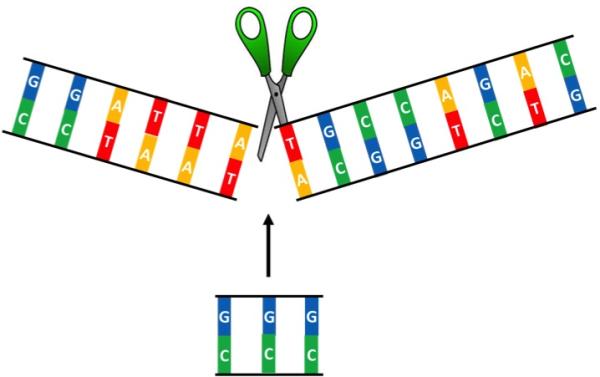Next Big Thing in Genome Modification: the CRISPR/Cas9 System
Seeking Better Methods
Ever since the discovery of the double-helix structure of DNA, scientists have sought ways to edit the genome. Altering gene expression partially and transiently via small interfering RNA has come a long way, and the progress has been spectacular. However, achieving complete and sustained modification of gene expression in a cell remains a tedious procedure that is often costly and time-consuming. For molecular biologists working with cell lines, quick and efficient knock out of one or more genes would provide a powerful tool for their studies. The CRISPR technology arrived two years ago to potentially fulfill that need.
CRISPR stands for Clustered Regularly Interspaced Short Palindromic Repeat and is based on bacterial and archaeal adaptive immune systems. I recently used CRISPR technology in one of my experiments. My goal was to achieve efficient gene silencing of my gene of interest. Several attempts using transient transfection of various siRNAs had failed initially. While I was trying to understand what was going wrong and design new strategies, I went to a conference about RNA Biology. After talking with different fellow investigators, I received a lot of suggestions about using CRISPR technology.
A New Way to Get A Knockout

The recently developed CRISPR/Cas technology enables precision genome modification.
CRISPR elements were originally observed in E.coli and later in other bacteria and archaea as repetitive DNA elements where viral or other foreign DNA integrated. Once a foreign DNA is identified by the host cell, it is cleaved and produces short sequences (~20 nucleotides) that integrate into CRISPRs. Those new sequences are then transcribed into RNAs, which complex with Cas nucleases and scan the genome of viruses or other foreign DNA to guide the nucleases on the cleavage site and protect the host cell from the foreign genome. This process provides a quick response and destruction of viral DNA, acting as a molecular vaccine.
CRISPR takes advantage of its simple principle to target specific genes in the genome of eukaryotic cells for efficient gene knockout. A Cas9/single guide (sg)RNA sequence can be easily delivered into cells. Since Cas genes do not exist in eukaryotic genomes, a Cas9 protein has to be ectopically expressed (expression of a gene in an abnormal place in an organism). Once a double-strand break is created by the nuclease, the Non-Homologous End Joining (NHEJ) machinery is recruited, causes insertions or deletions, and eventually changes the open reading frame of the gene. Taking it a step further, homology-directed repair can be used to insert any sequence that might be requested into the site of the break, thus allowing for inherent modifications in a simple and fast way. For further information, the CRISPR/Cas9 technology and its applications were recently reviewed.
Possibilities For Multiple Fields
The CRISPR technology is the next best thing in several fields. Whole-genome screening of cells by using lentiviral-based CRISPR libraries was recently published. Moreover, genome engineering in germ lines can lead to easier and more efficient generation of animal models (mice, rats, flies, nematodes, zebrafish), and it can allow knocking-out of multiple genes using different sgRNA, each targeting a different gene. Corrections of genetic mutations related to disease (e.g., the CFTR gene) also represent promising clinical applications of CRISPR. In addition, viral and pathogen gene disruption can be achieved to provide immunization and to render plants and animals resistant to pests and disease.
After the conference, I went back to lab with excitement and ready to learn about the new technology to make my experiment work. Eventually, with careful experimental design, I achieved the gene silencing I was looking for. It is a great feeling to reach your goal and see a working result after a few failed attempts. I really appreciated the breakthrough discovery of CRISPR/Cas9, and I am happy I had the opportunity to interact with other scientists to keep myself updated on the latest technologies.
To explore how researchers at the NIH IRP use the CRISPR technology, visit the “Research in Action” story and video featuring Dr. Rafael Casellas and read Dr. Karen Usdin’s blog entry on “Why Studying Bacteria Matters.”
Related Blog Posts
This page was last updated on Wednesday, January 31, 2024
